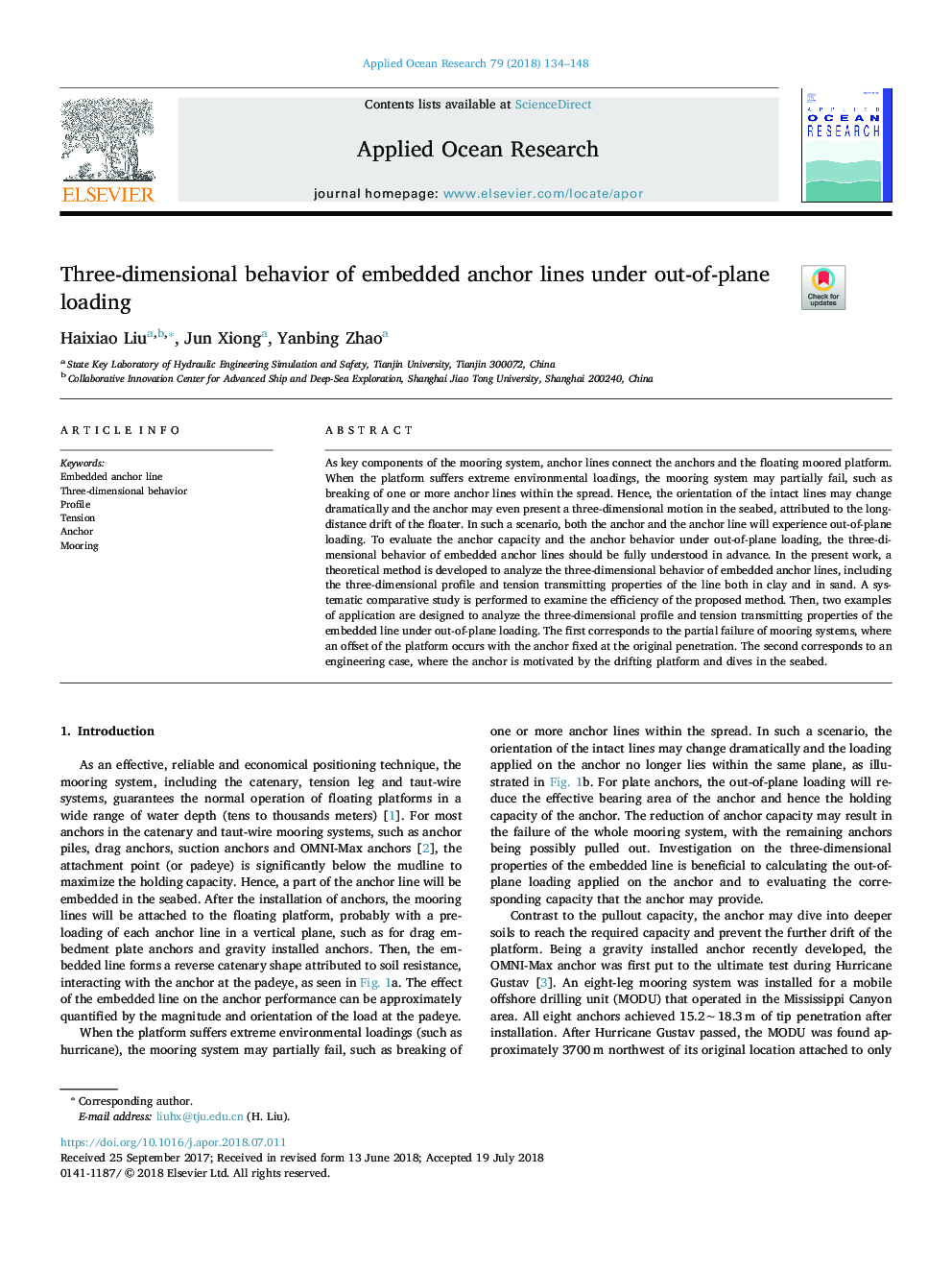| Article ID | Journal | Published Year | Pages | File Type |
|---|---|---|---|---|
| 8059192 | Applied Ocean Research | 2018 | 15 Pages |
Abstract
As key components of the mooring system, anchor lines connect the anchors and the floating moored platform. When the platform suffers extreme environmental loadings, the mooring system may partially fail, such as breaking of one or more anchor lines within the spread. Hence, the orientation of the intact lines may change dramatically and the anchor may even present a three-dimensional motion in the seabed, attributed to the long-distance drift of the floater. In such a scenario, both the anchor and the anchor line will experience out-of-plane loading. To evaluate the anchor capacity and the anchor behavior under out-of-plane loading, the three-dimensional behavior of embedded anchor lines should be fully understood in advance. In the present work, a theoretical method is developed to analyze the three-dimensional behavior of embedded anchor lines, including the three-dimensional profile and tension transmitting properties of the line both in clay and in sand. A systematic comparative study is performed to examine the efficiency of the proposed method. Then, two examples of application are designed to analyze the three-dimensional profile and tension transmitting properties of the embedded line under out-of-plane loading. The first corresponds to the partial failure of mooring systems, where an offset of the platform occurs with the anchor fixed at the original penetration. The second corresponds to an engineering case, where the anchor is motivated by the drifting platform and dives in the seabed.
Related Topics
Physical Sciences and Engineering
Engineering
Ocean Engineering
Authors
Haixiao Liu, Jun Xiong, Yanbing Zhao,
